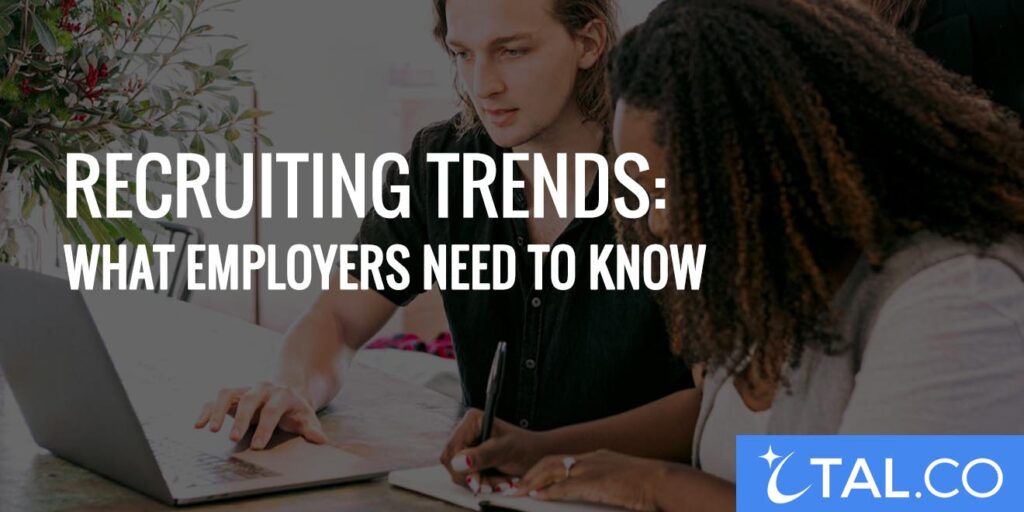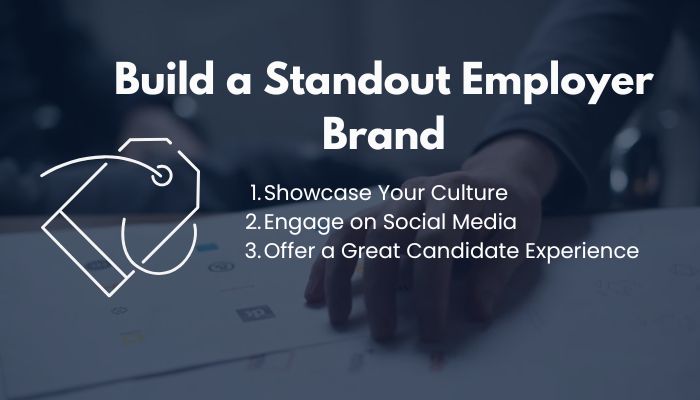
Recruiting Trends for 2025: What Employers Need to Know
I’ll be the first to admit: recruiting has gotten a little wild these past few years. One day you’re swamped with résumés, the next you’re wondering if anyone’s even reading your job ads. From what I’ve seen, these swings won’t disappear anytime soon. In fact, as we inch closer to 2025, we’ll probably see even more shifts in how companies connect with top-tier talent. Below are a few trends I’ve noticed picking up steam—and some ideas on how to adapt.
Outline
1. Build a Magnetic Employer Brand (Or Just Keep Blending In. Your Call.)

Data-driven hiring isn’t new, but it’s becoming more refined. By 2025, I predict most recruiters will lean heavily on analytics—from predicting which roles are prone to turnover, to pinpointing which interview styles lead to successful hires. Tracking the right metrics can absolutely help you work smarter, not harder.
That said, remember to keep some space for gut feelings and personal connections. I’ve had scenarios where a candidate didn’t check every single box on paper, yet they turned out to be a star player because they fit the culture like a glove. Even if your fancy new hiring software suggests otherwise, listen to that little voice in your head that says, “Hey, there’s something here.”
2. Employer Branding as a Magnet
People these days are downright thorough when they’re job-hunting—scouring social media, checking employee reviews, and asking former or current staff about life at your company. Gone are the days when slapping up a basic job listing was enough to reel in great applicants.
So, what’s the trick? Show who you really are. Put actual employees in the spotlight—maybe through Instagram takeovers or quick behind-the-scenes videos. Authenticity matters. Candidates want to see if they’d feel at home on your team, and a genuine brand story does a lot of the heavy lifting.
3. Remote and Hybrid? Yeah, They’re Sticking Around
Hybrid and remote roles aren’t a “pandemic-era fad.” They’re becoming permanent fixtures in the job market, and it’ll only become more widespread by 2025. Offering flexible work arrangements means you’ll attract candidates from a wider geographic radius—or those who just plain enjoy the freedom.
It does require some juggling—time zone differences, online collaboration, and making sure remote workers stay in the loop—but in my eyes, the benefits generally outweigh the headaches. You’re no longer limited to folks who happen to live within commuting distance. That said, hashing out clear expectations goes a long way toward ensuring your remote or hybrid team remains productive (and happy).
4. The Rise of Automated Hiring Tools
Let’s be real: a lot of frontline recruiting tasks are downright tedious—sifting through résumés, scheduling interviews, and following up with every candidate. By 2025, I’m guessing most of that grunt work will be automated or at least streamlined. Chatbots might screen initial applicants, while AI tools match essential keywords in résumés and cover letters.
Here’s the thing: try not to let automation swallow up genuine human contact. I’ve heard from candidates who say they feel like they’re shouting into the void when they apply online. Personal emails, quick phone calls, and sincere feedback can set your organization apart. Automation helps you move faster, but connection cements good impressions.
5. DE&I Goes Beyond Buzzwords
I know, I know—you’ve heard “diversity, equity, and inclusion” a thousand times by now. But trust me, by 2025, jobseekers are going to be even more vocal about wanting a workplace that truly walks the talk. That means leaders who represent different backgrounds, real checks on bias in job postings, and ensuring everyone has not just a seat at the table but also a chance to be heard.
I’ve seen companies do everything from inclusive job descriptions (no more “rockstar ninja” language, please) to building support systems for underrepresented groups. When candidates see that you’re putting in a genuine effort, it resonates—and they’ll spread the word.
Where Do You Go From Here?
If all of this feels like a lot to juggle, don’t sweat it. Even small tweaks—like updating your job listings for clarity or showcasing team stories on your careers page—can inch you closer to being the kind of workplace people are dying to join. And if you really feel underwater, staffing and recruiting partners can guide you through the more complex steps, like implementing advanced analytics or overhauling your brand presence.
Bottom Line
Recruiting in 2025 is about balance. We’ll use data and automation for speed, but also keep that personal, empathetic layer to build real connections. We’ll broadcast our culture honestly instead of relying on a corporate mission statement alone. And we’ll invest in flexibility and DE&I so that every kind of talent feels they can thrive. Do that, and you’ll be leaps ahead of other employers still stuck in the old ways.

